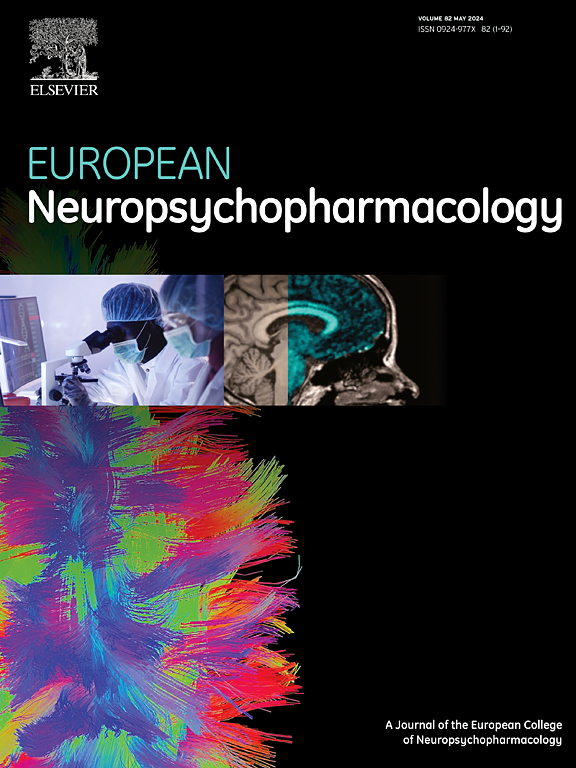电子健康记录中载脂蛋白单倍型、低密度脂蛋白胆固醇和痴呆相关性的性别差异
IF 6.7
2区 医学
Q1 CLINICAL NEUROLOGY
引用次数: 0
摘要
APOE基因与阿尔茨海默病及相关痴呆(ADRDS)的相关性存在性别差异:APOE ε4在女性中比男性与ADRD的相关性更强,而APOE ε2在女性中可能比男性更具神经保护作用。此外,APOE调节脂质生物学,脂质性状在整个生命周期中表现出性别差异。在临床实验室性状遗传结构性别差异的不可知性扫描中,我们发现APOE ε2与LDL胆固醇中位数之间的负相关在女性病历中强于男性。我们通过对范德比尔特大学医学中心遗传生物库(BioVU)的77,000名参与者进行交互和中介分析来跟踪这种关联,这些参与者拥有全基因组测序数据和低密度脂蛋白胆固醇测量值。性别修饰了APOE单倍型与LDL胆固醇的关联,APOE ε4 (LDL胆固醇升高)和APOE ε2 (LDL胆固醇降低)在女性中的关联强于男性。尽管女性服用他汀类药物的可能性要小得多,但APOE和性别对LDL胆固醇的影响并不能用他汀类药物记录的差异来解释。同样,性别改变与痴呆的关联,在女性中更强。在没有他汀类药物记录的女性和所有不考虑他汀类药物记录的男性中,较高的LDL与痴呆相关。在初步的中介分析中,LDL胆固醇介导了3% (95%CI: 1.5%, 2.4%) APOE ε3/ε4(相对于ε3/ε3)单倍型对男性痴呆的影响。对于没有他汀类药物记录的女性,LDL胆固醇介导APOE ε3/ε4(相对于ε3/ε3)单倍型对痴呆的影响占8%(3%,16%)。我们的研究结果表明,APOE的性别差异影响胆固醇生物学和痴呆。本文章由计算机程序翻译,如有差异,请以英文原文为准。
SEX DIFFERENCES IN THE ASSOCIATION OF APOE HAPLOTYPES, LDL CHOLESTEROL, AND DEMENTIA IN THE ELECTRONIC HEALTH RECORD
The APOE gene exhibits sex differences in associations with Alzheimer’s disease and related dementias (ADRDS): APOE ε4 is more strongly associated with ADRD in females than males while APOE ε2 may be more neuroprotective in females than males. Additionally, APOE regulates lipid biology, and lipid traits exhibit sex differences across the lifespan. In an agnostic scan for sex differences in the genetic architecture of clinical laboratory traits, we detected stronger inverse associations between APOE ε2 and median LDL cholesterol value across the medical record in females than in males. We followed-up on this association by performing interaction and mediation analyses for >77,000 participants with whole genome sequencing data and LDL cholesterol measurements in the Vanderbilt University Medical Center genetic biobank, BioVU. Sex modified the association of APOE haplotypes with LDL cholesterol, with stronger associations in females than males for both APOE ε4 (increased LDL cholesterol) and APOE ε2 (decreased LDL cholesterol). Although females were much less likely to have statin medication records, the interaction between APOE and sex on LDL cholesterol was not explained by differences in statin records. Similarly, sex modified associations with dementia, with stronger associations in females. Higher LDL was associated with dementia among females without statin record and among all males regardless of statin record status. In preliminary mediation analyses, LDL cholesterol mediated 3% (95%CI: 1.5%, 2.4%) of the effect of the APOE ε3/ε4 (relative to ε3/ε3) haplotype on dementia for males. For females without statin record, LDL cholesterol mediated 8% (3%, 16%) of the effect of the APOE ε3/ε4 (relative to ε3/ε3) haplotype on dementia. Our results suggest sex differences in APOE influence cholesterol biology and dementia.
求助全文
通过发布文献求助,成功后即可免费获取论文全文。
去求助
来源期刊

European Neuropsychopharmacology
医学-精神病学
CiteScore
10.30
自引率
5.40%
发文量
730
审稿时长
41 days
期刊介绍:
European Neuropsychopharmacology is the official publication of the European College of Neuropsychopharmacology (ECNP). In accordance with the mission of the College, the journal focuses on clinical and basic science contributions that advance our understanding of brain function and human behaviour and enable translation into improved treatments and enhanced public health impact in psychiatry. Recent years have been characterized by exciting advances in basic knowledge and available experimental techniques in neuroscience and genomics. However, clinical translation of these findings has not been as rapid. The journal aims to narrow this gap by promoting findings that are expected to have a major impact on both our understanding of the biological bases of mental disorders and the development and improvement of treatments, ideally paving the way for prevention and recovery.
 求助内容:
求助内容: 应助结果提醒方式:
应助结果提醒方式:


